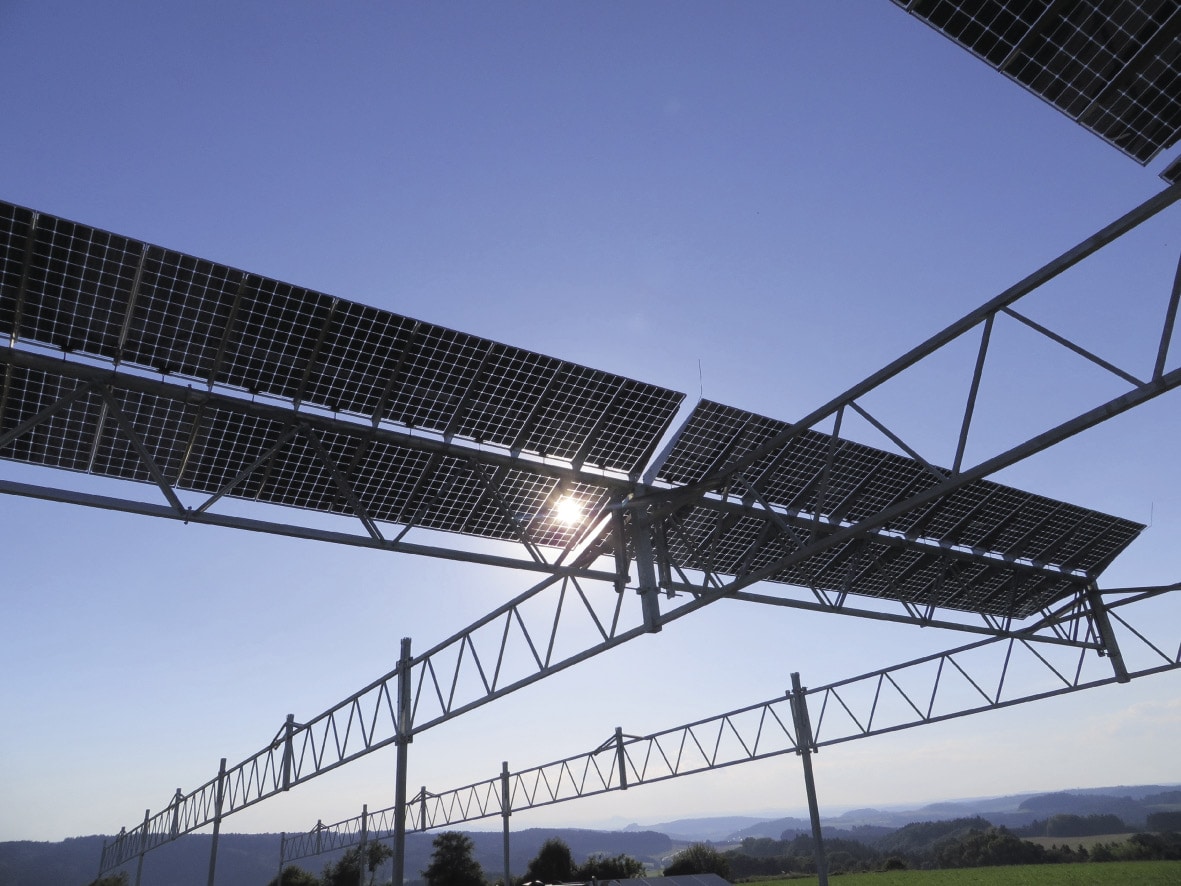It takes patience and a lot of communication to combine two sectors that are usually separated in terms of regulation, administration, and education. Topics for closing this gap range from the shade tolerances of the crops, hydrological effects, societal acceptance, policymaking, and, of course, PV technology. Luckily, solar provides a wide portfolio to address many of the different agricultural needs.
At Fraunhofer ISE, more than 20 people are working in the field of agrivoltaics. They are investigating and developing the technical, economic, legal, and social approaches needed to foster advancements in this field.
The projects currently underway are diverse. For example, PV greenhouses for shrimp production in Vietnam, tracked agrivoltaics for apple farming and standardization processes in Germany, and integrated rainwater harvesting and water management for agrivoltaic systems in semi-arid climatic zones of Western Africa.
Most of the R&D activities boil down to the same question: How can PV be optimally integrated to serve agricultural production? Depending on the region, the climate, and agricultural activities, the answers are often quite different.
Stilted systems
In open crop farming, the diversity of system approaches can be narrowed down by distinguishing between ground-mounted agrivoltaics with interspace cropping and stilted PV systems that allow agricultural cultivation below.
At Fraunhofer ISE, interspace agrivoltaics are acknowledged as a cost-efficient approach to integrating PV in agriculture and fostering biodiversity. In certain areas and agricultural cultivations, some systems might also be able to increase agricultural yields.
While the lack of reliable field data requires us to stay sober regarding the overall performance of interspace agrivoltaics, in general, one can say that the potential to provide beneficial microclimatic effects and to increase land use efficiency tend to be lower as compared to stilted agrivoltaics, which shelters crops and manages light availability.
Thankfully, given that we will need both interspace and stilted agrivoltaics in order to reach our climate goals, we do not have to decide on one or the other.
Agrivoltaic regulation
When it comes to regulation, a framework seems imperative to drive agrivoltaics forward in most countries. Otherwise, it is unrealistic to compete with established technologies in sectors as highly regulated as energy and agriculture.
However, dealing with many different solutions to implement agrivoltaics may be challenging. How can we ensure sufficiently high agriculture crop growing below the PV modules without excluding promising approaches? And what is meant exactly by “sufficiently high”? Is it 80%, like in Japan, or 50%, like in the U.S. state of Massachusetts?
Usually, revenues from PV power production far outperform those from agricultural activities. Thus, weak standards or inadequate regulation of agrivoltaics are likely to displace agriculture. While setting a minimum agricultural yield is easy, implementing efficient sanctioning mechanisms to ensure that we meet this minimum yield is more difficult.
Uncertainties about future yields and performance of the systems, as well as efforts for controlling and reporting, speak in favor of well-defined criteria that can be quantified before or shortly after the system installation. Ultimately, it is social consensus that will decide where and which kind of agrivoltaic systems people would like to see in their landscape.
The importance of setting certain qualitative standards is, however, highest during the first phase when the technology is still relatively new and opinions have not yet been shaped.
Japan to Germany
Government support programs indicate the rise of agrivoltaics worldwide. After Japan launched the first supporting scheme on agrivoltaics in 2012, other countries like China, South Korea, France, and the United States followed. Recently, Germany also joined this list. And it may well be the case that the number of countries supporting agrivoltaics increases in the future.
The main driver for Germany’s commitment is the 2021 amendment to the German Renewable Energy Act, which has scheduled a 50 MW tender together with the more cost-competitive floating PV and rooftop PV on parking lots for April 2022.
Whether agrivoltaics will be among the projects awarded in the tender or not depends, to a degree, on the German Federal Network Agency, which will specify the tender details by October 2021. One thing is clear though: In direct competition with floating PV, solar carparks, and interspace agrivoltaics, stilted agrivoltaics will not be able to win the race.
How to best integrate PV in agriculture, if and how to stilt, and the question of regulation will all be discussed at the event AgriVoltaics 2021. The conference is scheduled to be held virtually from June 14-16, 2021. Fraunhofer ISE and its partners have also published new guidelines for agrivoltaics, which can be accessed from the Fraunhofer ISE website.
Max Trommsdorff
About the author
Max Trommsdorff has worked as head of group agrivoltaics at Fraunhofer Institute for Solar Energy Systems ISE since March 2020. In 2015, he received his M.Sc. in economics and politics from the University of Freiburg. At Fraunhofer ISE, he wrote his master thesis, “Agrophotovoltaic: Opportunities, Risks and Strategies Towards a More Efficient Land Use.” Since then, Trommsdorff has worked as a project manager and expert for agrivoltaics, with a focus on economic feasibility, technology transfer, and institutional design. Recently he developed agrivoltaic projects based on aquaculture in Vietnam and horticulture in India.
This content is protected by copyright and may not be reused. If you want to cooperate with us and would like to reuse some of our content, please contact: editors@pv-magazine.com.
